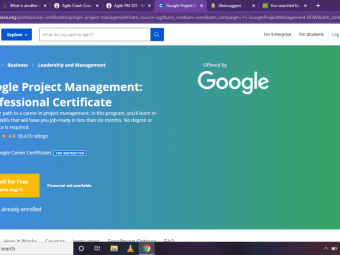Valves Principles Operation Designs
Tags: Piping
A complete understanding of construction details & functioning of valves for successful operation of your piping system
Last updated 2022-01-10 | 4.4
- Understand valves and control valves working principles for successful operation of your plant and piping systems- Understand valve construction details (bonnet
- stem
- disk
- seat
- packing
- body
- etc)
- Know the characteristics and applications for each valve type (ball
- plug
- gate
- pinch
- butterfly
- diaphragm
- check
- needle...)
What you'll learn
Understand valves and control valves working principles for successful operation of your plant and piping systems
Understand valve construction details (bonnet
stem
disk
seat
packing
body
etc)
Know the characteristics and applications for each valve type (ball
plug
gate
pinch
butterfly
diaphragm
check
needle...)
Know how to choose the correct valve for a certain application
Know how to dismantle and assemble all types of valves using 3D and 2D models
Identify and know the principles of operation of common valve actuators (pneumatic
hydraulic
electrical
etc)
Understand how single acting and double acting pneumatic actuators work through graphics and 3D animations
Understand the principle of fail open (FO) and fail close (FC) actuators
Know how to convert a single acting spring return actuator to a double acting actuator and vice versa
Know how to convert a fail close actuator to a fail open actuator and vice versa
Learn how to size valves
Learn how to calculate the resistance coefficient "K" of any valves
Learn what the flow coefficient "Cv" of a control valve means and how to use it in assessing flows and pressure drops
Understand the theory of regulating flow with control valves
Understand the concepts of cavitation and choking in control valves through graphics and 3D animations
Learn how to size and select a control valve when designing and operating any piping system for both gases and liquids
Know and identify valve symbols on engineering drawings such as P&ID's
Know the standards and conventions for valve status (open
closed
throttled)
Identify valve position and failure mode on your P&IDs (LO
LC
FO
FC
FAI…)
And much more...
* Requirements
* Some engineering or field knowledge is preferable but not mandatory. All the concepts are explained in depth using an easy to understand language to allow students to build their knowledge from the ground up* Having attended our "Piping systems : Drafting & Design" training course is a plus but not mandatory
* Having attended our "Flow of Fluid Through Piping systems" training course is a plus but not mandatory
Description
- Understand valves and control valves working principles for successful operation of your plant and piping systems
- Understand valve construction details (bonnet, stem, disk, seat, packing, body, etc)
- Know the characteristics and applications for each valve type (ball, plug, gate, pinch, butterfly, diaphragm, check, needle...)
- Know how to choose the correct valve for a certain application
- Know how to dismantle and assemble all types of valves using 3D and 2D models
- Identify and know the principles of operation of common valve actuators (pneumatic, hydraulic, electrical, etc)
- Understand how single acting and double acting pneumatic actuators work through graphics and 3D animations
- Understand the principle of fail open (FO) and fail close (FC) actuators
- Know how to convert a single acting spring return actuator to a double acting actuator and vice versa
- Know how to convert a fail close actuator to a fail open actuator and vice versa
- Learn how to size valves
- Learn how to calculate the resistance coefficient "K" of any valves
- Learn what the flow coefficient "Cv" of a control valve means and how to use it in assessing flows and pressure drops
- Understand the theory of regulating flow with control valves
- Understand the concepts of cavitation and choking in control valves through graphics and 3D animations
- Learn how to size and select a control valve when designing and operating any piping system for both gases and liquids
- Know and identify valve symbols on engineering drawings such as P&ID's
- Know the standards and conventions for valve status (open, closed, throttled)
- Identify valve position and failure mode on your P&IDs (LO, LC, FO, FC, FAI…)
- And much more...
Course content
9 sections • 145 lectures








 This course includes:
This course includes:
















